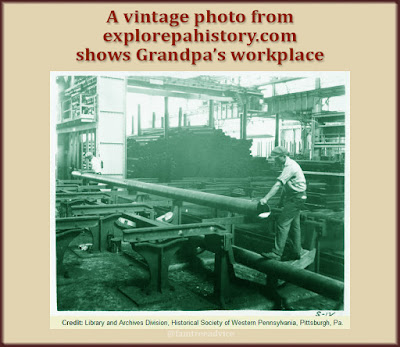Don't let family tree research plans overshadow a new DNA opportunity.
I recently heard from a DNA match I hadn't looked into before. And it's no wonder I hadn't gotten to her yet. We share only 10 centiMorgans. That makes us mostly likely 4th cousins once removed. (See "3 Steps to Identifying Certain DNA Matches".)
But she wrote to me and said we have a particular last name in common: Capozza. That's a great way to reach out to a DNA match. Tell them which name to focus on.
Luckily, that name rang a bell for me. I've researched that name because a man named Nicola Capozza was the witness to my great grandparents' marriage in upstate New York in 1906.
With a bit of digging, I found that my great grandmother's brother, Giuseppe Caruso, married Marianna Capozza. Her brother was Nicola Capozza, the witness to the marriage marriage. And the Capozza siblings' mother was a Caruso. So there's definitely a couple of tie-ins between the Capozza family and me. I even wrote about my tangled connection to this family.
I also knew immediately that this last name comes from my great grandmother's Italian hometown of Pescolamazza. Luckily, I have quite a decent collection of the town's vital records on my computer. The information is sitting there waiting for me to investigate.
 |
| I know these people will eventually have a connection to me. |
In the past I spent 5 years visiting a Family History Center to view the vital records from my maternal grandfather's Italian hometown of Baselice. I documented absolutely everything. (Those records and more are now on my computer.)
More recently I've spent tons of time on my paternal grandfather's Italian hometown of Colle Sannita. I'm making insane progress piecing together my Colle ancestors.
But my Pescolamazza research—the birthplace of my father's mother's mother—hasn't gotten very far. That's why I decided to let this distant DNA match guide my research for a while.
Nicola Capozza, the man who witnessed my great grandparents' marriage, fits into my tree. But I have a bunch of completely disconnected people in my family tree named Capozza. At first I thought they were connected, but it was a mistake. Instead of deleting them, I gave them each a profile image that says "No Relationship Established" and hoped I'd find their connection later.
It turns out, my DNA match is closely related to my disconnected Capozza branch. There has to be a connection to me somewhere, right? And it's probably hiding on my computer in those vital records.
So I changed my research plan to work with this new DNA connection. I've added dozens of people to my family tree as a result. I added people related to me and people related to my DNA match. I filled out my family so much that 2 nights ago I discovered the names of one set of my 6th great grandparents! Hello, Girolamo and Giovanna!
 |
| Researching my DNA match's relatives led me to discover the names of my 6th great grandparents! |
Based on my findings so far, my connection to this DNA match may be in the Capozza family, the d'Amico family, the Martino family, or the Caruso family. They're all connected. I need to keep plucking people with these names out of the vital records and seeing where they fit.
It's a jigsaw puzzle, and I'm missing that one piece that's all blue sky. It's fun and it's expanding my family tree. And I know there will come a moment when one of the "No Relationship Established" people—and everyone attached to them—becomes my relative.
When a DNA match reaches out to you, do your homework. Even if you can't find the connection, you will be expanding your family tree and enjoying the whole process. Enjoying the research is what it's all about.




